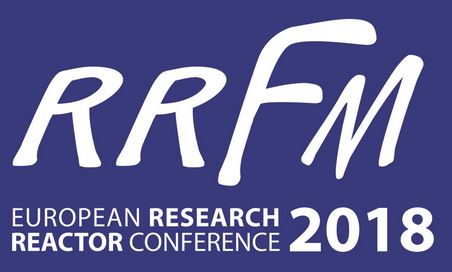Chernobyl
 scroll scroll 
At the Chernobyl location, 130 km north-west of Kiev,
four reactor units of type RBMK 1000 entered service between 1977 and
1983. On 26th April 1986, the most serious accident to date
in the peaceful use of nuclear energy occurred in unit 4. Although the
accident at the Chernobyl Nuclear Power Plant was due to a series of
wrong decisions and forbidden interventions by the operating staff,
it was the inefficient reactor safety concept and the lack of a pressure-tight
containment enclosing the reactor plant which were ultimately responsible
for the occurrence of the accident and the release of such large quantities
of radioactive substances. The reactor accident developed during an
experiment with the turbine generator set of the power plant. A number
of operating mistakes including the bridging of shutdown signals entailed
a major power increase - up to 100 times the nominal power. The overheating
of fuel caused the rupture of fuel rod claddings, resulting in a heavy
fuel/water reaction with shock-like pressure build-up and destruction
of the reactor building. Considerable sections of the graphite moderator
and the plant were set on fire. During the destruction phase, approximately
eight tonnes of radioactive fuel from the core were hurled into the
building and the environment. Thanks to the immediately initiated fire
fighting, it was possible to extinguish the fires outside the reactor
building and in the engine house within four hours. To smother the moderator
graphite fire in the reactor and limit the consequences of the accident,
unit 4 was filled in by air with a total of 5 000 tonnes of lead, sand
and clay in the following days. By November 1986, the Chernobyl reactor
unit 4 stayed „buried“ under a structure of metres of concrete
- called sarcophagus.
The massive release of radioactive fission products
from the destroyed reactor continued for more than ten days. Due to
the thermal lifting effects the release, in particular that of the volatile
fission products such as iodine and caesium, took place up to considerable
altitudes (1 500 m and more). This led to dispersion of the activity
of 4 . 1018 Bq released into the atmosphere over
broad areas of Europe. The radioactive substances released on 26th April reached Sweden on 28th April due to the prevailing north-west
wind. The activity increase measured there in the air was the first
indication of the accident in the west. Because of the weather conditions,
the activity emission of the 27th April reached Poland and
that of the 29th and 30th April reached Central
Europe via the Balkans. On 29th April the radioactive cloud
reached the territory of the Federal Republic of Germany.
The power plant personnel and in particular the fire-fighting
staff were seriously affected by radiation. The dose values amounted
up to 16 Gy. 203 persons with acute radiation syndrome were treated
in hospitals. 31 persons died as a result of burns and radiation overexposure.
The radiation exposure in the town of Pripyat 4 km to the west of the
location with
45,000 inhabitants amounted to up to 6 mSv/h on the day after the accident.
The population was subsequently evacuated. In the following days, a
further 90,000 persons were evacuated from the 30-km zone around the
location. A resettlement of the 10-km zone is not intended; the agricultural
use of the 10- to 30-km zone depends upon the success of decontamination
programmes and the result of radiological examinations.
Due to meteorological influences, the activity quantities
from the radioactive cloud deposited in the regions of the Federal Republic
are quite different - in the north and west clearly less than in the
south and south-east. Therefore, no uniform values for the resulting
radiation dose in Germany are possible, which also depends considerably
on the individual dietary habits. The inhalation dose was almost exclusively
determined by the aerial activity between 1st and 5th May 1986. The ingestion dose results almost exclusively from I 131,
Cs 134 and Cs 137. The radiation exposure in the following years was
remarkably lower than in the first year after the accident.
Person group |
period |
North |
South |
foothills of the Alps |
| |
|
effective dose, mSv |
infants |
1986 |
0.12 |
0.35 |
0.6 |
lifetime |
0.4 |
1.3 |
2.4 |
adults |
1986 |
0.1 |
0.3 |
0.5 |
lifetime |
|
|
2.1 |
Average radiation exposure due to the
Chernobyl accident in different areas of Germany
For individual persons with extreme living and eating
habits, maximum dose values of up to twice or three times of these values
may result.
In the areas of the Ukraine and Belarus affected by
the accident, children and young adults showed a considerable increase
in thyroid gland cancer in the following years, which is to be explained
by the radiation exposure. Above all the intake of iodine 131, a radioactive
isotope with a half-life of about 8 days, via the nutrition chain and
its storage in the thyroid gland led to high radiation doses in this
organ. In the countries concerned, more than one thousand thyroid gland
cancer cases have occurred to date in children and young people. Based
on the risk observations, a total of up to 4 000 thyroid gland cancer
cases are expected.
Unit 2 of the four reactor units at the Chernobyl location
was finally shutdown in October 1991. Unit 1 followed in November 1996.
On 15th December 2000 unit 3, the last reactor in Chernobyl,
was finally shutdown.
back
|
|

11 - 15 March 2018
Munich, Germany

30 September - 04 October 2018
Prague, Czech Republic |